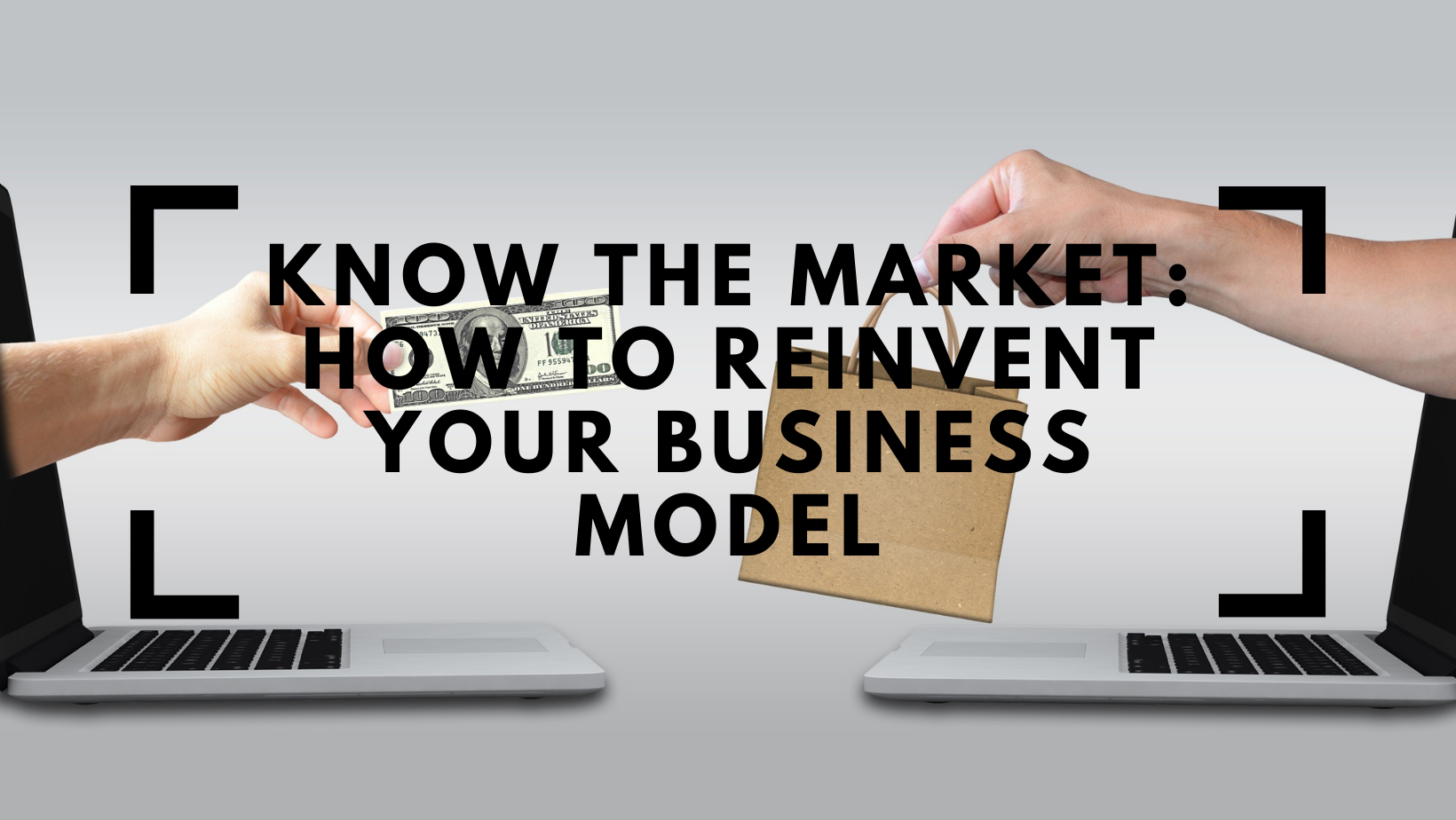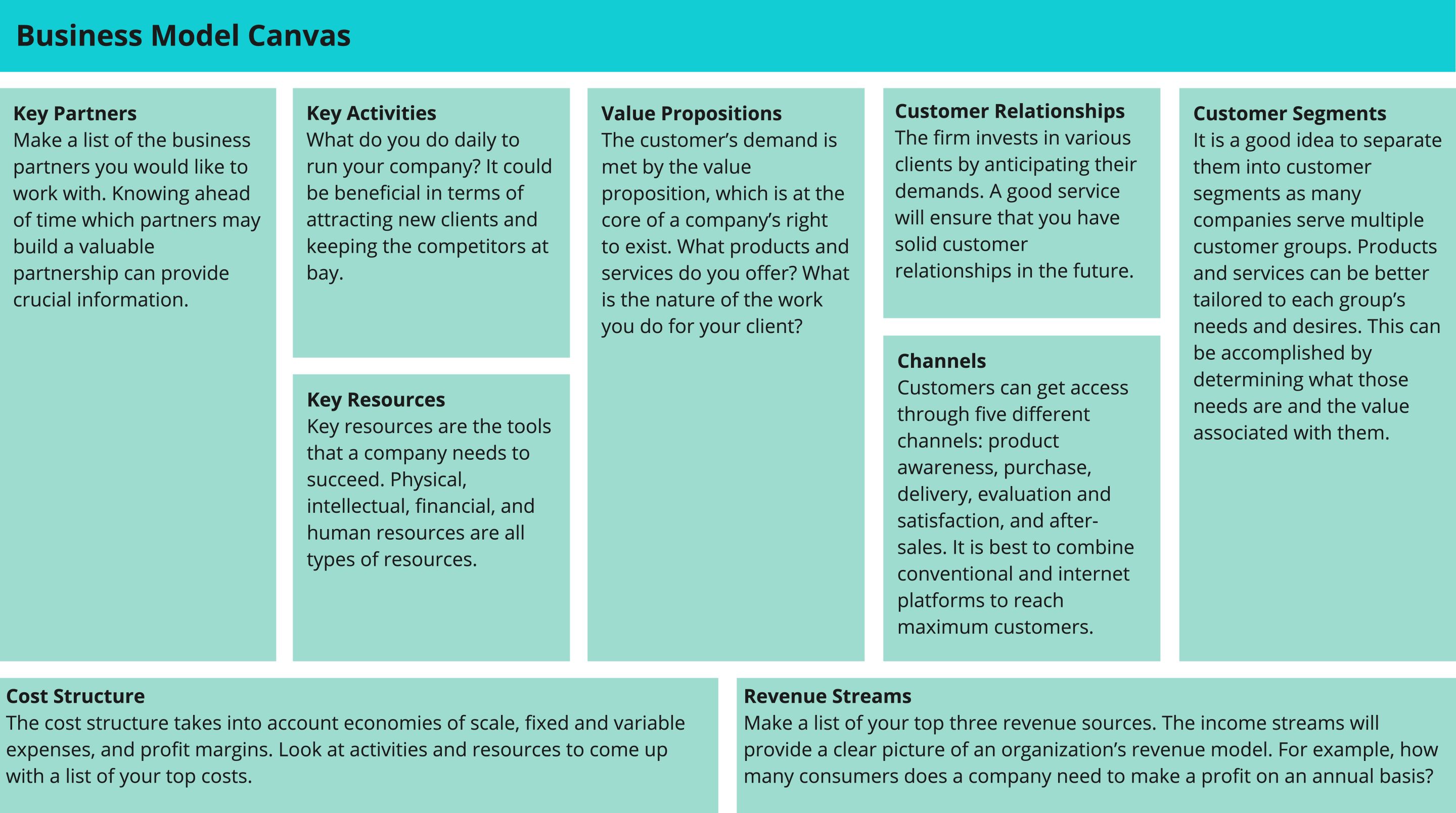
Discover the power of the Business Model Canvas (BMC) – a dynamic framework revolutionizing the way businesses strategize, visualize, and evolve. Originating from the visionary minds of Alexander Osterwalder and Yves Pigneur, this single-page blueprint encapsulates the essence of your venture, dissecting it into nine essential elements. From delineating key resources to sculpting revenue streams, the BMC crystallizes your business vision, fostering agile adaptation and robust strategic planning. Uncover why this innovative tool has become indispensable for startups and enterprises alike, offering a streamlined approach to navigate the complexities of modern business landscapes.
The Business Model Canvas
The Business Model Canvas (BMC) is a great business tool used to design, visualize and reinvent your business. The BMC model is another name for the Business Model Canvas. The Business Model Canvas is used as a strategic tool for the creation of a new business and examines the status of an existing business.
Business Model Canvas is a graphical depiction of several factors that depict organizational values. The BMC can help you communicate with your team and clients about how things are going in your company and why they do business with you. Your business can be easily planned by breaking it down into different segments using a business model canvas.
It is a single-page document presenting out an idea in a logical manner through the fundamentals of a business or product. BMC tool entails using a one-sheet canvas (a collection of boxes or a single tablet), with the right half devoted to customer issues and the left to business processes and resources. The canvas will give your team a cohesive vision of a fresh business concept because nine parts are described on the same page. It is also available in an online web-based format.

Origin of the Business Model Canvas
The Business Model Canvas was created by Alexander Osterwalder, a Swiss businessman, and Yves Pigneur, a management information systems professor. They presented nine elements for the Business Model Canvas, which they refer to as an organization’s building elements.
Elements of Business Model Canvas
The Business Model Canvas is categorized into nine main areas of concentration that serve as building blocks for a visual representation of business/company.
Key Resources
Key resources are the tools that a company needs to succeed. Physical, intellectual, financial, and human resources are all types of resources.
Key Partners
Make a list of the business partners you would like to work with. Knowing ahead of time which partners may build a valuable partnership can provide crucial information.
Key Activities
What do you do daily to run your company? It could be beneficial in terms of attracting new clients and keeping the competitors at bay.
Value Propositions
The customer’s demand is met by the value proposition, which is at the core of a company’s right to exist. What products and services do you offer? What is the nature of the work you do for your client?
Customers Relationship
The firm invests in various clients by anticipating their demands. A good service will ensure that you have solid customer relationships in the future.
Cost Structure
The cost structure takes into account economies of scale, fixed and variable expenses, and profit margins. Look at activities and resources to come up with a list of your top costs.
Revenue Stream
Make a list of your top three revenue sources. The income streams will provide a clear picture of an organization’s revenue model. For example, how many consumers does a company need to make a profit on an annual basis?
Channels
Customers can get access through five different channels: product awareness, purchase, delivery, evaluation and satisfaction, and after-sales. It is best to combine conventional and internet platforms to reach maximum customers.
Customer Segments
It is a good idea to separate them into customer segments as many companies serve multiple customer groups. Products and services can be better tailored to each group’s needs and desires. This can be accomplished by determining what those needs are and the value associated with them.
Why Use the Business Model Canvas
The Business Model Canvas is used for the following purposes:
To quickly draw your business idea.
To get into your business by making the connections between your proposed ideas and how to implement those ideas into your business.
Develop a clear vision of how your company will operate in the future.
What the Business Model Canvas Can Do for Your Business
The business model canvas is a tool for evaluating, updating, describing, and visualizing business models. It explains how an organization captures, generate, and distribute value. It allows consumers to see what’s important and forces them to focus on key areas. It can also be utilized by a group of people (workers or advisors) to evaluate and reach agreements.
One of the biggest problems with the old technique of business model was that it was almost always outdated as soon as the author completed writing it. These comprehensive plans contained detailed cost estimates, revenue projections for years to come, and long-term staffing strategies. How could any of these be true for a long time? It’s long and thorough, and by the time it’s finished, it’ll probably be mostly false.
Bruce Gitlin, a company development expert reported that many new entrepreneurs and small firms are so focused on getting up and running that they don’t have time to plan. When they do attempt to prepare, they are frequently perplexed and unsure where to begin. BMC tool provides a broad framework for creating a business strategy, a detailed business plan or a prioritized action plan.

The following are some of the reasons why BMC is important to businesses/companies.
A business model canvas can be used to quickly draw out a roadmap. Instead of trying to write out every element of your product plan ahead of time, you can simply write the highlights and then get started transforming the canvas into your product roadmap.
You can change your Business Model Canvas roadmaps whenever needed. If you create a business model canvas to guide your business roadmap, and something happens that requires you to pivot your product. You just need to update this brief and high-level document that will be much easier than tearing apart and editing a huge business plan.
This one-page Business Model Canvas allows you to change any plan or item whenever priorities change and new demands are added. So you can adjust your approach easily at any time.
Because you can create a canvas in such a short amount of time, it will more properly reflect your strategic thinking as well as your company’s current reality. If circumstances change, it will be easier to alter than a long, comprehensive strategy.
Conclusion
In conclusion, the BMC emerges as an indispensable tool for entrepreneurs and established businesses alike, offering a succinct yet comprehensive framework to envision, adapt, and communicate business strategies effectively. Crafted by Alexander Osterwalder and Yves Pigneur, the BMC delineates nine essential elements, ranging from key resources to revenue streams, providing a holistic perspective on organizational dynamics. By facilitating quick visualization and agile adaptation, the BMC transcends the limitations of traditional business planning methods, enabling swift responsiveness to evolving market landscapes. In a business environment characterized by rapid change and uncertainty, the Business Model Canvas stands as a beacon of clarity and agility, empowering enterprises to navigate complexities with strategic acumen and operational dexterity.
